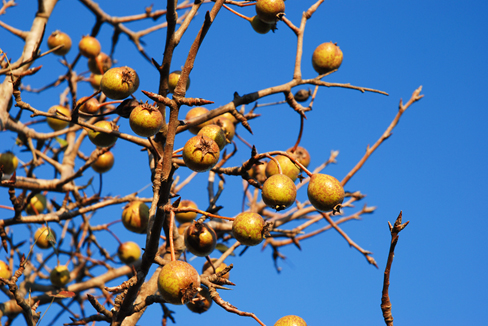Restricted seed dispersal frequently leads to fine-scale spatial genetic structure within plant populations. Depending on its spatial extent and the mobility of pollinators, this inflated kinship at the immediate neighbourhood can critically impoverish pollen quality. Despite the common occurrence of positive fine-scale spatial genetic structure within plant populations, our knowledge regarding the role of long-distance pollination preventing reproductive failure is still limited. Using microsatellite markers, the existence of positive fine-scale spatial genetic structure was examined in two low-density populations of the tree Pyrus bourgaeana. Controlled crosses among trees differing in their kinship were designed to investigate the effects of increased local kinship on plant reproduction. Six pollination treatments were used and fruit production, fruit and seed weight, proportion of mature seeds per fruit, and seed germination were fully monitored. Results revealed positive fine-scale spatial genetic structure in both study populations and lower fruit initiation in flowers pollinated with pollen from highly-genetically related individuals within the neighbourhood, with this trend intensifying as the fruit development progressed. Besides, open-pollinated flowers exhibited lower performance compared to those pollinated by distant pollen donors, suggesting intense qualitative pollen limitation in natural populations. Positive fine-scale spatial genetic structure is translated into impoverished pollen quality from nearby pollen donors which negatively impacts the reproductive success of trees in low-density populations. Under this scenario of intrapopulation genetic rescue by distant pollen donors, the relevance of highly-mobile pollinators for connecting spatially and genetically distant patches of trees may be crucial to safeguarding population recruitment. informacion[at]ebd.csic.es: Castilla et al (2019) Genetic rescue by distant trees mitigates qualitative pollen limitation imposed by fine-scale spatial genetic structure. Mol Ecol 28 DOI 10.1111/mec.15233
https://onlinelibrary.wiley.com/doi/full/10.1111/mec.15233

 Las altas temperaturas están provocando que las lagunas y las marismas de Doñana pierdan agua rápidamente
Las altas temperaturas están provocando que las lagunas y las marismas de Doñana pierdan agua rápidamente




